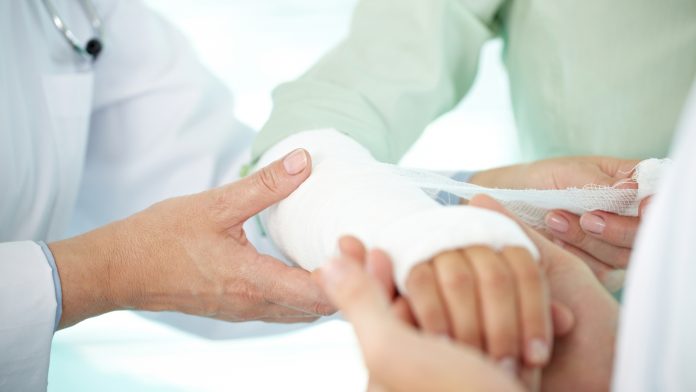
A research team based in the UK has designed a novel printing technique that produces an effective skin equivalent, a significant breakthrough in wound healing.
The team, comprised of scientists from the University of Birmingham and the University of Huddersfield, has developed an innovative approach to print skin equivalents that may change the landscape of what is currently achievable in wound healing.
Treating chronic wounds is especially problematic due to them being deep and therefore challenging to repair. Usually, the top of the injury starts to heal before the bottom, resulting in the wound collapsing in on itself, which, over time, can lead to scar tissue and reduced skin function.
Enhancing wound healing
The researchers’ novel technique is the first of its kind to simulate three layers of skin, the hypodermis (the fatty layer), the dermis, and the epidermis.
Alan Smith, the author of the study, said: “You effectively have three different cell types. They all grow at different speeds. If you try to produce tri-layered structures, it can be very difficult to provide each of the requirements of each different layer.”
The team employed a method called suspended layer additive manufacturing (SLAM) to overcome this obstacle. This enabled them to create a gel-like material to support the skin equivalent, with it twisting and altering the structure of the gel as it formed to produce a bed of particles that can then support the second phase of gel injection.
During the printing, the skin layers are deposited within the support gel that holds everything in place; after the printing, the team washed the support material away, leaving only the layered skin equivalent behind.
Assessing performance
The researchers discovered that if they moved a needle through the supporting gel, it repaired itself faster than other similar techniques, resulting in higher resolution printing than previous methods, meaning that it can be utilised to print more complex skin structures. They tested the skin substitute by cutting a hole in pig tissue and printing a skin equivalent to fill the hole, observing signs of wound healing after culturing the model system for 14 days.
“We used a stain that allowed us to quantify the integration we got between original material and tissue,” said author Liam Grover. “We were able to demonstrate some integration even after a short period of time.”
The researchers could not assess chronic wound healing with the substitute due to the process taking longer than their model allowed, which was only between 14 to 21 days. Nevertheless, they are now planning to examine longer, appropriate models for chronic deep wounds, with the objective being to repair human skin and mitigate scarring for all patient scenarios.
























